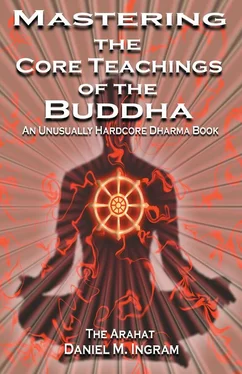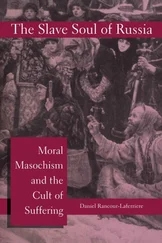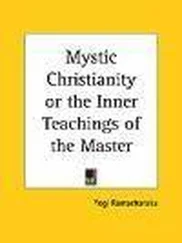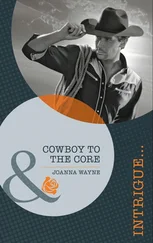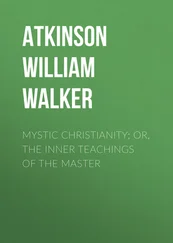Daniel Ingram - Mastering the Core Teachings of Buddha - An Unusually Hardcore Dharma Book
Здесь есть возможность читать онлайн «Daniel Ingram - Mastering the Core Teachings of Buddha - An Unusually Hardcore Dharma Book» весь текст электронной книги совершенно бесплатно (целиком полную версию без сокращений). В некоторых случаях можно слушать аудио, скачать через торрент в формате fb2 и присутствует краткое содержание. Год выпуска: 2009, ISBN: 2009, Издательство: Aeon Books, Жанр: Старинная литература, на русском языке. Описание произведения, (предисловие) а так же отзывы посетителей доступны на портале библиотеки ЛибКат.
- Название:Mastering the Core Teachings of Buddha - An Unusually Hardcore Dharma Book
- Автор:
- Издательство:Aeon Books
- Жанр:
- Год:2009
- ISBN:9781904658405
- Рейтинг книги:5 / 5. Голосов: 1
-
Избранное:Добавить в избранное
- Отзывы:
-
Ваша оценка:
- 100
- 1
- 2
- 3
- 4
- 5
Mastering the Core Teachings of Buddha - An Unusually Hardcore Dharma Book: краткое содержание, описание и аннотация
Предлагаем к чтению аннотацию, описание, краткое содержание или предисловие (зависит от того, что написал сам автор книги «Mastering the Core Teachings of Buddha - An Unusually Hardcore Dharma Book»). Если вы не нашли необходимую информацию о книге — напишите в комментариях, мы постараемся отыскать её.
Mastering the Core Teachings of Buddha - An Unusually Hardcore Dharma Book — читать онлайн бесплатно полную книгу (весь текст) целиком
Ниже представлен текст книги, разбитый по страницам. Система сохранения места последней прочитанной страницы, позволяет с удобством читать онлайн бесплатно книгу «Mastering the Core Teachings of Buddha - An Unusually Hardcore Dharma Book», без необходимости каждый раз заново искать на чём Вы остановились. Поставьте закладку, и сможете в любой момент перейти на страницу, на которой закончили чтение.
Интервал:
Закладка:
THE THREE KAYAS
Contrary to what some Tibetan Buddhists would tell you, arahats have a deep understanding of what is meant by their teaching of the Three Kayas or “Bodies of Understanding.” For me, the Three Kayas are very close in meaning and implication to the scopes of the Three Trainings. Arahats understand the fullness of the implications of having been born and of there still being a body and mind (called the 308
Models of the Stages of Enlightenment
“nirmanakaya” or “manifestation body”), relating to training in morality.
All teachings of dependent arising, interconnection and
interdependence fall into the realm of the nirmanakaya.
Arahats know intimately the fullness of the ordinary realities of the human condition: sickness (physical and mental), health, sorrow, joy, conflict, harmony, pleasure, pain, clarity and confusion, stupidity and brilliance. All of these manifest according to the same natural laws that have always been in effect, contrary to popular belief. A body was born and it will get sick and die. The Eight Worldly Winds of praise and blame, fame and ill repute, success and failure, and gain and loss still blow impersonally as always. The laws of biochemistry, physics and physiology still hold. We still have to pay taxes. From a cynic’s point of view, the nirmanakaya is the most disappointing aspect of
enlightenment. Did one really imagine that somehow it would be otherwise? Don’t believe the hype! Another of the great Bill Hamilton one-liners was, “Suffering less, noticing it more.” The more we wake up, the more we notice exactly what it means to have been born.
The nirmanakaya is what is meant by this passage pertaining to the arahat: “The disturbances resulting from the taint of being can no longer be found here, the disturbances related to the taint of attraction can no longer be found here, the disturbances related to the taint of aversion can no longer be found here, and yet there remains the disturbances inherent in these six sense doors that are dependent on a body and conditioned by life”, from Sutta #121, The Shorter Discourse on Voidness, in The Middle Length Discourses of the Buddha. Notice that this says, “six sense doors.” Arahats still think, contrary to occasional myths about “stopping thought”, as noted above. While the content of thoughts is still inherently dual, the true nature of the way thoughts manifest is absolutely non-dual. Arahats know both aspects of thought directly, a bit like being able to see waves on the ocean and yet also that the whole thing is made of water and intimately connected. No wave would ever be fooled into thinking that one wave was watching, controlling, or isolated from another.
The nirmanakaya is also the aspect of understanding that has to do with personality, habits and issues of character. Don’t imagine that just by understanding the full ultimate truth of phenomena that these things 309
Models of the Stages of Enlightenment
will somehow lose their considerable causal inertia. To paraphrase Chi Nul, a great Korean Chan monk, just because the Sun is shining brightly doesn’t mean that all the snow will instantly melt.
On a related theme, the nirmanakaya also relates to the facts of the physiological inertia and biological conditioning of the bodily aspects of the emotional life. The mind of a true arahat is extremely resilient, but the flesh works according to the same laws that were in place before.
The spacious mental resilience of an arahat has some positive consequences for physical life, but it does not completely transform it.
Thus, physical sensations associated with hunger, pain, tiredness, sexual arousal, nervousness, fear and all the rest are still intimate realities for the living arahat when they arise and are not inconsequential, though the points made above in the Karma model about seeing things arise and vanish still apply. The nirmanakaya includes issues of biochemistry and neurochemistry, and all of the issues of mental pathology that may go along with these.
The nirmanakaya bears out the truth so well articulated by Lao Tzu when he talked about dark and light containing one another and difficulty and ease complementing one another. No level of
enlightenment will allow one to just pick one’s favorite half of reality or humanity and eradicate the rest. This simply never happens and is not possible.
I think that everyone on the spiritual path should occasionally sit down with a piece of paper and list their favorite half of reality that they imagine or wish would be left if they got fully enlightened, and then list all the aspects of reality that they wish or “know” would vanish forever.
They should then list the things that they imagine would show up as a result of full realization that are not here now. The differences between these lists often point directly to what blocks the development of wisdom from clear acceptance and understanding of reality.
Even arahats and buddhas have a favorite half of reality as well as dreams about how things could be, so these dreams are not the problem. The difference is that highly realized beings understand directly that both the “good” and “bad” halves are of the nature of ultimate truth, including all thoughts about them, and this makes all the difference. These sensations flicker effortlessly and vanish, getting no 310
Models of the Stages of Enlightenment more nor less consideration than they are due. The point I am trying to make here is to include the sensations that make up your world in your practice, and don’t retreat into idealized fantasies of what realization will be like, though notice such sensations if and when they occur.
Lastly, the nirmanakaya relates to our “stuff,” our issues, our childhood traumas, our dark secrets. I have routinely mentioned that when doing insight practices one should try to see these things at the moment-to-moment level. However, one must also find a way to deal with our stuff in the traditional ways, or perhaps non-traditional ones.
Just do this work when not doing insight practices. While there are connections between these two types of work, they are often in direct conflict. Make time for the macroscopic, when we face and learn about how to live well in the world in terms of emotions, issues, conflicts, tears, joys, people, jobs and relationships. However, also make time during which you resolutely put all of that behind you, time when you stay at the level of flickering sensations. Unhealthy fixation on either perspective is guaranteed to cause problems.
Arahats also have a wondrous understanding of all of this that is unique to them and buddhas (though there may be hints of it at third path) called the “sambhogakaya.” They know that the full range of phenomenal reality and even the full range of the emotional life can be deeply appreciated for what it is. They see that the world of concepts, language, symbols, visions, thoughts and dreams is fundamentally the same as the world of materiality, that they both share the same essential nature from an experiential point of view. The first line of the Gospel of John, “In the beginning there was the word, and the word was God,” is a nice way to put it. For those who find this phrase too cryptic, I paraphrase it as: “From the beginning, concepts, words, dreams, visions, and the realm of thought have always been an aspect of ultimate reality.”
Further, in some strange way even the worst of the world has a richness of texture that can be deeply enjoyed, and a mysterious and sometimes awe-inspiring glory mixed into it, inherent in it. What they were looking for was permeating all the sensations without exception that had made up their world all along! What staggering irony this is, and what a silent joy it is to discover this at last. This is what is meant by 311
Читать дальшеИнтервал:
Закладка:
Похожие книги на «Mastering the Core Teachings of Buddha - An Unusually Hardcore Dharma Book»
Представляем Вашему вниманию похожие книги на «Mastering the Core Teachings of Buddha - An Unusually Hardcore Dharma Book» списком для выбора. Мы отобрали схожую по названию и смыслу литературу в надежде предоставить читателям больше вариантов отыскать новые, интересные, ещё непрочитанные произведения.
Обсуждение, отзывы о книге «Mastering the Core Teachings of Buddha - An Unusually Hardcore Dharma Book» и просто собственные мнения читателей. Оставьте ваши комментарии, напишите, что Вы думаете о произведении, его смысле или главных героях. Укажите что конкретно понравилось, а что нет, и почему Вы так считаете.
